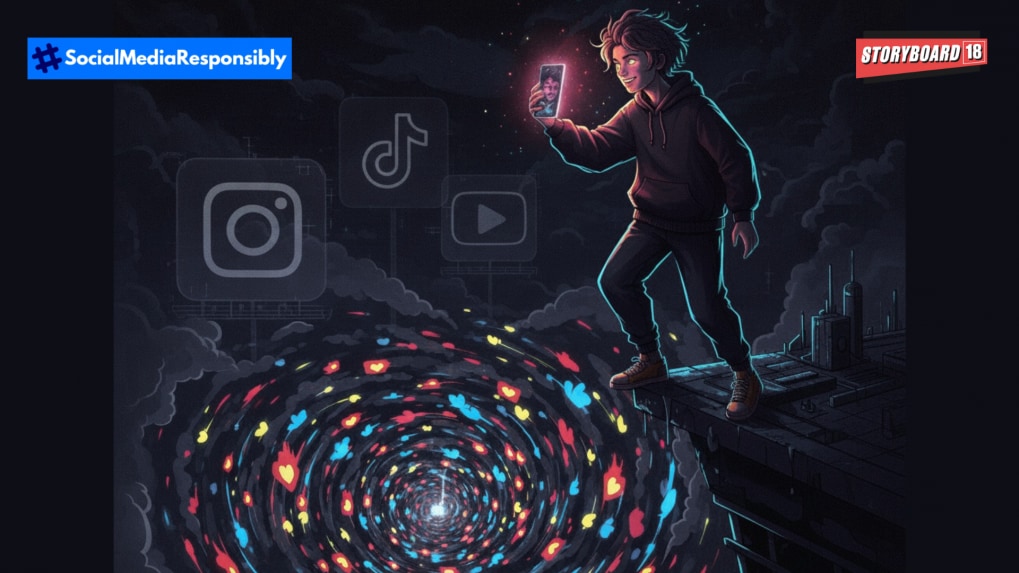Brand Makers
Dil Ka Jod Hai, Tootega Nahin

Note to readers:
In an always-on world, the way we use social media shapes not just our lives but the safety and wellbeing of those around us. 'Social Media, Responsibly' is our commitment to raising awareness about the risks of online recklessness, from dangerous viral trends to the unseen mental and behavioural impacts on young people. Through stories, conversations and expert insights, we aim to empower individuals to think before they post, to pause before they share, and to remember that no moment of online validation is worth risking safety. But the responsibility does not lie with individuals alone. Social media platforms must also be accountable for the environments they create, ensuring their tools and algorithms prioritise user safety over virality and profit. It’s time to build a culture where being social means being responsible - together.
As live streaming cements its position as one of the most influential forms of digital entertainment, legal experts and industry observers are sounding the alarm over the rising tide of toxic and abusive content on platforms such as YouTube, Twitch, Kick, and X. The growing influence of gaming influencers—many with massive followings among teenagers and pre-teens—has put regulators, platforms, and law enforcement on alert.
Once viewed as spontaneous and “raw,” live streaming has evolved into a powerful broadcast medium with real-world consequences. With more than 550 million gamers in India, the post-pandemic surge in live gaming broadcasts has enabled ultra-low latency interaction between creators and viewers. This instant feedback loop, however, has also amplified hate speech, harassment, and toxic behaviour—often rewarding creators with higher engagement for their edgy or abusive conduct.
“Gaming influencers are content creators or streamers who build large followings by creating content related to video games. They influence their audience’s opinions, preferences, and behaviours in the gaming world,” said Abha Shah, Partner at IndiaLaw LLP. “Legal action can be taken against gaming influencers or streamers who use offensive or toxic language on platforms like YouTube, especially in cases of hate speech, harassment, obscenity, or threats.”
Platforms already maintain community guidelines prohibiting hate speech, harassment, threats, and profanity. Violations typically lead to content takedown, demonetization, or even permanent channel bans. Viewers and victims are encouraged to report offending content, often resulting in faster action than through court processes.
However, platform policies alone are not sufficient. When toxic or abusive content crosses legal thresholds, formal complaints can lead to police investigations and judicial proceedings. In India, depending on the gravity of the offence, streamers may face summons, arrests, fines, or imprisonment.
Action can be initiated under multiple laws, including the Information Technology Act, 2000, the Information Technology (Intermediary Guidelines and Digital Media Ethics Code) Rules, 2021, the Promotion and Regulation of Online Gaming Act, 2025, and the Bharatiya Nyaya Sanhita, 2023.
“Gaming streamers and influencers who use abusive, obscene, or threatening language during live broadcasts can face criminal liability for acts that amount to public obscenity, harassment, or conduct likely to disturb public order,” explained Rahul Mehta, Partner at King Stubb & Kasiva. “The fact that the content is live does not exempt it from legal scrutiny—once transmitted publicly, the liability attaches.”
Minors as a Vulnerable Audience
One of the sharpest concerns revolves around the influence of these creators on minors. Gaming influencers often enjoy huge fan bases among teenagers and pre-teens, making their content especially impactful. Experts warn that toxic language and behaviour on streams can normalize bullying, sexism, racism, and online harassment.
Sonam Chandwani, Managing Partner KS Legal & Associates said, "When young audiences are repeatedly exposed to profanity, abuse, or gendered insults, it normalizes toxic behavior and desensitizes them to online harassment. In that sense, YouTube and similar platforms cannot escape accountability. They have community guidelines prohibiting hate speech and harassment, yet enforcement often depends on public reporting. A stronger, proactive crackdown on toxic creators through content moderation, demonetization, or suspension would be essential to ensure that influencers with substantial youth audiences do not misuse their platforms."
Unlike pre-recorded videos, live streams are harder to moderate because of their spontaneous nature. Asish Philip, Executive Partner at Lakshmikumaran & Sridharan Attorneys, noted, “Live streams often escape immediate moderation. Introducing mandatory moderation delays, stricter conduct codes for monetized creators, and an independent grievance redressal framework could make the space safer and more responsible.”
Regulatory proposals include mandatory buffering delays to allow moderation teams to review live content before broadcast, deploying AI tools for real-time flagging of offensive language or behaviour, imposing age-appropriate content labels, and applying stricter rules for content accessible to minors. Some experts advocate tiered monetization systems, where repeated breaches could lead to loss of revenue, and transparent “show cause” procedures to ensure accountability without curbing spontaneity.
“Live streaming sits at the crossroads of free speech, entertainment, and public order,” said Siddharth Chandrashekhar, Advocate at the Bombay High Court. He suggested that influencers be held accountable through post-facto mechanisms such as issuing show cause notices and providing full opportunities to respond, rather than pre-screening all content. These notices and hearings, with only sensitive portions redacted, should be made public to ensure transparency.
“Self-regulation backed by clear legal consequences is a constitutionally sound, balanced, and practically effective path,” Chandrashekhar added.
India’s evolving legal landscape, including the Bharatiya Nyaya Sanhita, IT Act, and Online Gaming Act, signals a clear shift toward greater accountability in digital spaces. Given its immediacy and massive reach among minors, live streaming is at the heart of this transformation.
“Free speech cannot be a shield for digital misconduct,” said Chandwani. “When influence meets irresponsibility, law and platforms must intervene together to protect the ecosystem and its most impressionable users.”
From Delhi’s sharp-tongued lyricists to Chennai’s bilingual innovators and North-East India’s experimental beatmakers, Rap 91 LIVE’s lineup was a sonic map of the country’s cultural diversity.
Read MorePiyush Pandey was a force of nature - brute force for his opponents and a natural creative at heart.